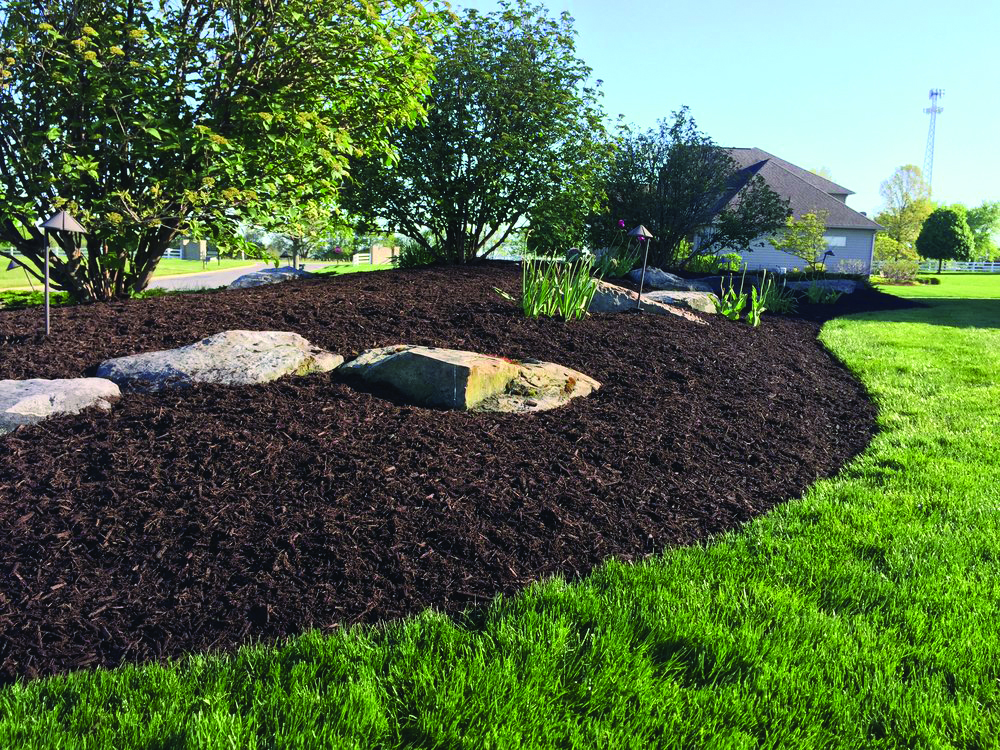PROPER MULCHING TECHNIQUES AND PROBLEMS CAUSED BY OVER MULCHING
Now is the great time to be mulching existing garden beds.
Here is a quick list of what proper mulching will provide:
- Mulch is considered the first line of defense against weed growth.
- New mulch adds a fresh, clean look to all garden beds
- Mulch helps to keep the ground shaded, cooler, and moist longer.
- As mulch decomposes it adds organic matter to the soil below.
- Mulch protects the trunk from mower and weed whacker damage.
Here is a list of problems associated with over-mulching:
Incorrect mulching is a waste of time and money and is becoming the number one cause of death of trees and shrubs. Over-mulching, with mulch piled high, and directly against the stems or trunks smothers the root flare zone.
- Root suffocation – roots on all plants need to have oxygen to survive. A heavy layer of mulch reduces the oxygen available to the roots.
- Mulch piled high against the trunk kills the inner bark and the roots which can no longer receive food from the leaves.
- Deep layers of mulch provide a perfect habitat for pests.
- Thick layers of certain mulches can create impervious surfaces that do not allow water to reach the roots, especially during any dry periods.
Remember the Golden Rule when it comes to Mulching
MULCH OUT NOT UP – STOP THE VOLCANO MULCHING HABIT
Tips on proper mulching methods:
- 2 to 4” is as thick as you want the mulch to be at any given time.
- Keep the mulch away from the trunk of the plant.
- Mulch under the “drip line” of the plant, if possible.
- If you are wanting to add “fresh” mulch then you may need to take away some of the old mulch


Thank you, and remember perennials need only a thin (1”) layer of mulch and pine bark that does not steal nutrients is best.
Thanks for stopping the mulch volcanos. Who does that anyway?
Donald,
Good Morning. Thank you for adding this tip on mulching.
As for the volcano mulching – it is much too common to see. When you are driving around – look and you will see that much too often homeowners and maintenance crews pile up the mulch against the trunk and trees and shrubs. Not a good trend. Take care, Doug
Can I spread mulch over leaves in garden beds?
Good Morning.
Absolutely – you can spread mulch over leaves. The leaves will break down into organic matter which will help enrich the soil. One thing you could do is to take your mower and mow over these leaves. Breaking up the leaves will add to them breaking down faster. Thank you for the question. Doug
Hi Doug,
I am a little confused about the drip line and how I mulch regarding it. I am assuming it is where the water would drip off a tree the most…However, I do not understand whether I mulch all the way out to that point. I would have to take up a lot of grass from under my Japanese Maple.
Thank you for your help!
Andre,
Good Morning.
You have the correct understanding about “drip line”. In the ideal world you would mulch under the shrub under the entire drip line. This will help to keep the feeder roots of the shrubs protected, cooler, and moist longer – especially during our hot, dry summer months. Thank you for taking the time to send me your questions. Doug
I’m almost afraid to ask but what are your thoughts on rubber mulch vs regular?
Cynthia,
Good Morning. A good question that others have also asked.
I am not a fan of rubber mulch. I am a fan of the natural mulch such as pine and hardwood. I like knowing that this mulch will age and over time break down adding organic matter to our soil. Rubber mulch can not do this. This is my thought on rubber mulch. Take care, Doug
Thanks for the comment on volcano mulching. I always thought it strange snd have seen it done in several states.
Carolyn,
Good Afternoon. And, thank you for adding your opinion. Much appreciated, Doug
Which is better shredded mulch or chip mulch?
Louise,
Good Afternoon.
Both forms of mulch are excellent to use in the landscape. It is all about personal preference because of the two different looks that each create. Doug
What are your thoughts about cranesbill geranium as ground cover in Maryland? Are there any native species and are they available at Meadows Farm?
Sonia,
Good Morning. I love this plant. I believe a few years ago the Cranesbill geranium was the selected perennial of the year. Yes, it is hardy in Maryland. Matter of fact this geranium is hardy much further north of Maryland. I can only assume that you will be able to find Cranesbill at other Meadows Farm Nurseries. Doug